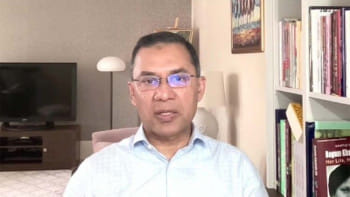The fault in some socio-political films

Brilliant attempts to depict the angst of a community on screen will fail if the execution is not done right. Srijit Mukherji's latest movie "Sherdil: The Pilibhit Saga" is once again a reminder of this.
Its similarities with Goutam Ghose's 2004 movie, "Shunyo Awnko", in subject matter and priorities, are refreshingly beautiful. Unfortunately, despite the gripping plots, both movies seemingly fail to reach the masses.
"Sherdil: The Pilibhit Saga", released in June, is indeed a breath of fresh air from the other recent projects of Srijit. It is based on the character Gangaram, a village chief, who offers to sacrifice his life for his villagers. When the harvests at the village are bad for consecutive years, and he fails to attain any government scheme to support his starving people, he hatches a plot.
Finding no other way, he decides to sacrifice himself to the tigers in the nearby national reserve, as the families of the victims of such attacks are usually offered government support.
This movie is inspired from true events near the Pilibhit Tiger Reserve, where some people deliberately chose to be killed, in order to get financial help. Despite such an interesting plot, the movie fails to portray the reasons why these villagers had to adapt such dire measures to begin with.
The issues of administrative negligence and the burdens of bureaucracy barely appear in the film, and are never linked back to. Instead, the movie focuses on Gangaram's quest for a tiger— which, despite the stunning cinematography, eventually turns monotonous.
Pankaj Tripathi, as usual, performs brilliantly, but his potential as an actor is underutilised because the climax falls short of the build-up.
Gangaram builds a duo with Neeraj Kabi's character, Jim Ahmed, a poacher whom he meets in the jungle. Together, they engage in several moments of Kafkaesque comedy. However, the plot here begins to stray from the main storyline. The rest of the movie stretches on unnecessarily, leaving out some essential explanations that would have benefitted the film's multi-dimensional approach.
This approach of tying several events together in a film can also be found in "Shunyo Awnko". The movie begins with corporate officer Agni Bose, played by Priyanshu Chatterjee, meeting an ardent journalist Raka, played by Konkona Sen Sharma. The story is about Agni's company's mining project that will leave many aboriginals displaced, and Raka's fight to help the local people to get justice. The film's plot revolves around their intriguing rendesvous.
However, just like in Srijit Mukherji's "Sherdil: The Pilibhit Saga", the other aspects of the movie make it too tiresome to watch. The problems of Agni's married life deviate the story from the main plotline. This attempt at adding too many dimensions within one movie inevitably fails.
If filmmakers indeed want to articulate the critical issues and impacts of climate change and mining, they need to appeal to the mass audience. So, a gripping story should be the topmost priority for any film.
An interesting plotline alone will only drive-up curiosity, just to result in an eventual disappointment. At the end of the day, the viewer's engagement depends upon both the cinematography and the quality of the film's story.


 For all latest news, follow The Daily Star's Google News channel.
For all latest news, follow The Daily Star's Google News channel. 




Comments